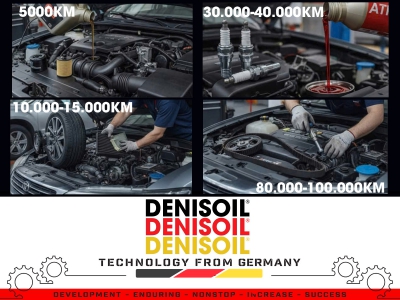WARNING SIGNS THAT YOUR CAR’S AIR CONDITIONING SYSTEM IS IN TROUBLE
The air conditioning system not only keeps drivers comfortable but also helps maintain concentration and driving safety.
If you notice any of the following signs, have your system inspected and serviced promptly to avoid severe damage or costly repairs.
1. Weak Airflow – Poor Cooling Performance
Symptoms:
- Airflow from the vents is weak and not cold enough, even when the fan speed and temperature are set to the lowest levels.
- The system blows only regular air, with little or no cooling effect.
Possible Technical Causes:
- Low refrigerant level (gas leak): Leakage may occur at hose joints, compressor seals, condenser, or pipelines.
A low refrigerant charge reduces system pressure and cooling efficiency, and prolonged operation may damage the compressor.
- Dirty or clogged cabin air filter: Restricts airflow through the evaporator, leading to weak cooling.
- Weak blower motor or malfunctioning fan: Insufficient airflow across the evaporator core.
Recommended Actions:
- Check refrigerant pressure using an AC manifold gauge set.
- Detect leaks with UV dye or an electronic leak detector.
- Replace the cabin air filter every 5,000–10,000 km (depending on driving conditions).
- Clean the evaporator and condenser regularly.
2. Musty or Sour Odor Inside the Cabin
Symptoms:
- A musty, sour, or unpleasant odor appears when the air conditioner is turned on.
- The smell lingers inside the vehicle, especially after the engine is turned off.
Technical Causes:
- Dirty, damp evaporator core: Dust and moisture allow mold and bacteria to grow on the evaporator surface, producing foul odors.
- Clogged condensate drain hose: Causes water to accumulate in the evaporator housing, creating an anaerobic environment that generates odor.
- Lack of periodic cleaning: Dust buildup inside air ducts and a dirty cabin filter worsen air quality.
Solutions:
- Clean the evaporator using a specialized AC cleaner (avoid corrosive chemicals that may damage aluminum fins).
- Disinfect air ducts and interior using ozone treatment or antibacterial sprays.
- Replace the cabin air filter.
- Best practice: Turn off the A/C a few minutes before shutting off the engine to dry the evaporator and prevent mold formation.
3. Unusual Noises When the A/C Is On
Symptoms:
- When the A/C is switched on, a squealing, rattling, or clicking sound is heard from the engine compartment.
- The noise disappears when the A/C is turned off.
Technical Causes:
- Squealing noise: The compressor drive belt is loose, worn, or hardened, causing slippage when the compressor engages.
- Clicking or knocking sound:
- The magnetic clutch on the compressor is worn or not engaging properly.
- The compressor itself is seizing, binding, or has internal bearing failure.
Recommended Actions:
- Inspect belt tension and replace if deteriorated.
- Check the operation of the magnetic clutch and listen for abnormal compressor noises.
- Stop using the A/C immediately if loud noises occur — continued use may seize the compressor, break bearings, or burn the clutch coil.
Maintenance Recommendations
|
Item
|
Recommended Interval
|
Remarks
|
|
Check refrigerant level & system pressure
|
Every 6 months or 10,000 km
|
Recharge if low
|
|
Clean evaporator and condenser
|
Once a year
|
Use proper cleaning solutions
|
|
Replace cabin air filter
|
Every 5,000–10,000 km
|
Replace more often in dusty environments
|
|
Inspect drive belt & compressor
|
Every maintenance service
|
Detect noise or wear early
|
Technician’s Notes
During A/C inspection, always:
- Measure high and low side pressures (HP/LP) using professional gauges.
- Check center vent air temperature (should be 6–10 °C for optimal cooling).
- Observe temperature difference between condenser and evaporator to assess refrigerant circulation condition.
 Tiếng Việt
Tiếng Việt
 Chinese
Chinese
 English
English







